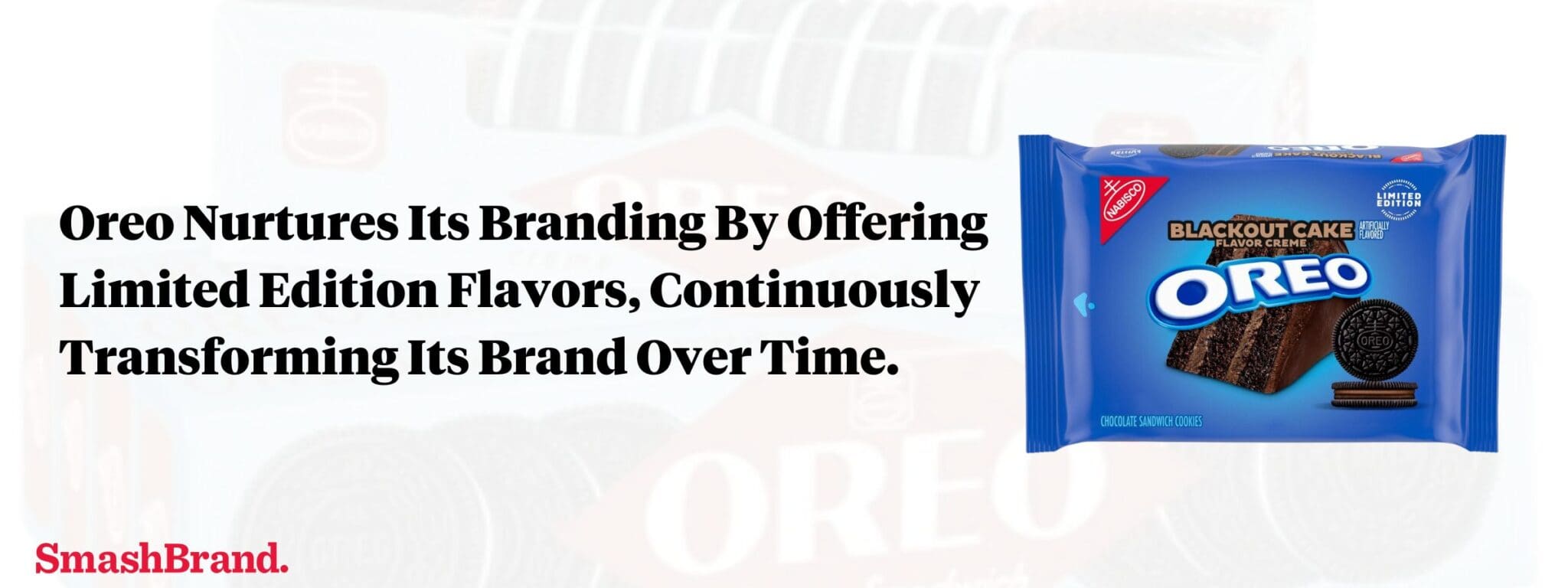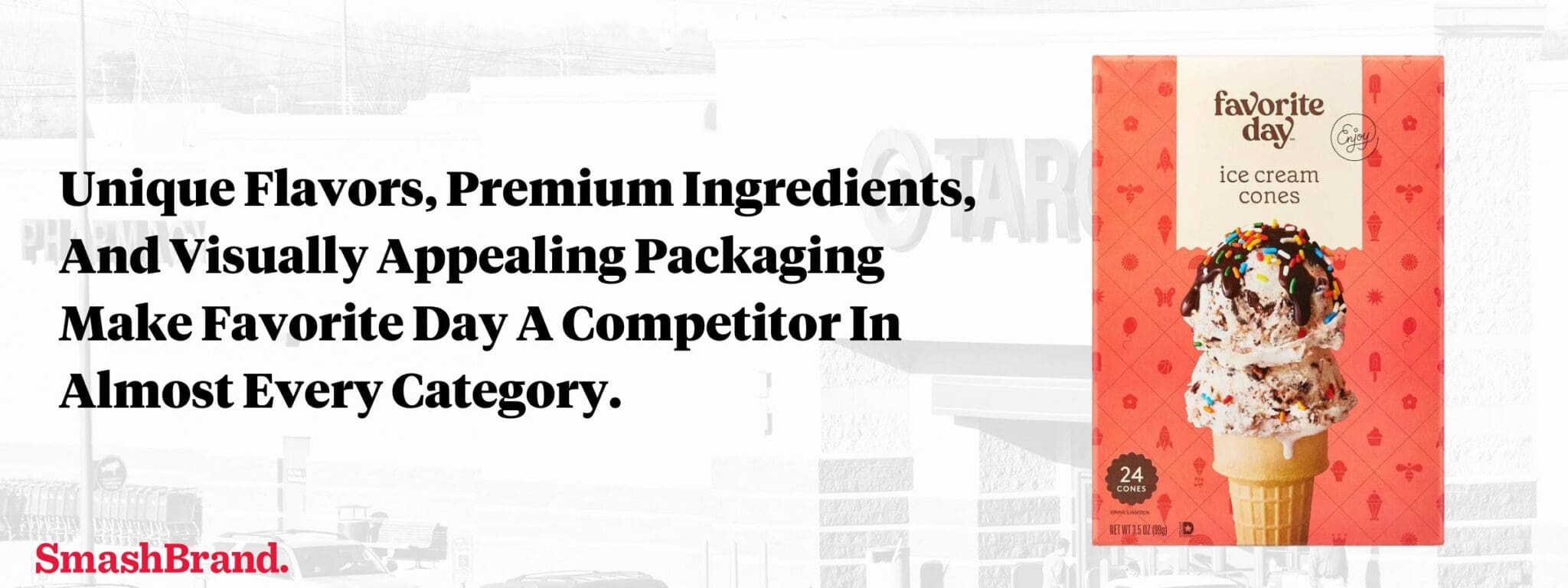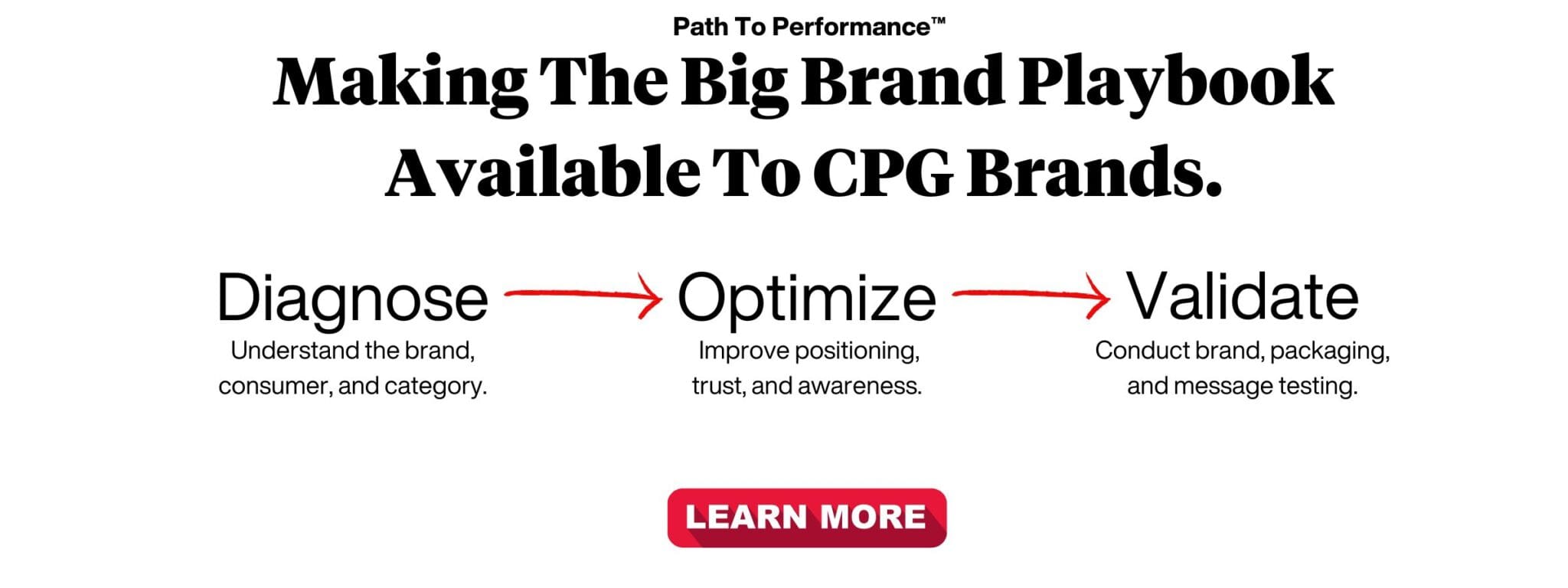We all love a good transformation story, or as Jim Collins puts it, we witness a brand go from good to great. While that is one of the best business books of all time, many consumer brands have lost significant market share since their rise to greatness—the point is that a brand transformation isn’t a one-time event.
This article aims to help you understand the what, when, why, and how of a brand transformation. Whether it’s a physical or digital transformation, you will learn what it takes to transform your brand to attract your target consumer better.
Here’s what we will cover:
- The true definition of brand transformation.
- Determining the right time for a brand transformation.
- The risks of a brand transformation.
- How to prepare for a brand transformation.
- The brand transformation process.
- Additional brand transformation tips.
- Considerations for working agencies specializing in brand transformations.
- Examples of brand transformations.
- Why you need a data-driven approach.
Once you’ve finished this article, you will be ready to engage in a process to effectively and efficiently transform your brand.
What is A Brand Transformation?
A brand transformation is any significant change in the brand identity, perception, and value. It goes beyond slight modifications and encompasses a comprehensive overhaul of various brand aspects, including the visual identity, messaging, positioning, customer experience, and overall brand strategy.
A brand transformation represents a strategic effort to evolve and adapt to changing market conditions, consumer preferences, and business objectives. It involves redefining the brand’s essence, aligning it with the target consumer’s needs and aspirations, and creating a compelling and differentiated brand value proposition.
This transformative journey may involve physical and digital aspects, such as updating the brand’s visual identity, refreshing the logo, revamping packaging designs, improving the online presence, enhancing customer touchpoints, and repositioning the brand in the market.
Undertaking a brand transformation is a strategic decision acknowledging the need for change to stay relevant, competitive, and resonate with the target audience. It signifies a brand’s willingness to invest in its long-term success and sustainability.
When Is The Right Time For a Brand Transformation?
Choosing to rebrand is not a decision brands should take lightly. Even in the face of sales challenges, moving forward with a rebrand demands the company allocate the appropriate amount of resources and expertise to the initiative. Here is a list of reasons you may want a brand refresh throughout your company.
- Expanding into new markets
- Addressing category consumer shifts
- Becoming an omnichannel brand
- Getting ahead of a potential brand crisis
- Growing to a broader target audience
- Addressing a decline in brand revenues
- Putting a stop to declining brand awareness
- Improving the customer experience
- Aligning brand communication
- Preventing category disruptors from stealing market share.
The Risks Of A Brand Transformation
We’ve all seen those cringe-worthy brand redesigns where we ask ourselves, “What were they thinking!” These examples of visual identity transformation mistakes are evident to the naked eye, but it isn’t only the glaring mistakes that lead to a drop in performance.
More common are those we don’t see on the surface, requiring brands to scramble until they find out what went wrong and mitigate as much of the negative impact as possible.
The question is, “How do you mitigate risk before going through a brand transformation”? The answer is through rigorous consumer testing about each aspect of the brand you hope to transform.
There is an ongoing balancing act for scaling brands where they must grow yet stay true to their target audience. Lose balance, and it can cost you hard-earned market share.
But you also have to manage the ever-changing emotions of your customers and the team as you work to evolve your brand. Even subtle changes can create a tidal wave effect for both groups.
Poor implementation is another mistake brands make, most notably by having inconsistent visuals and messaging during the initial brand transition. When messaging and designs are scattered, employees cannot effectively implement the change across the organization. And when consumer-facing brand assets do not align, your identity suffers.
Preparing For A Brand Transformation
There are several important things a brand must remember before they begin the transformational process.
- The entire team needs to be confident in the rebrand.
- Complete transformations take time.
- Subjectivity serves no purpose in this process.
Remember, you are not changing the look and tone of voice; you are changing consumer perception of your brand, and changing how people perceive you require an intensive strategic process.
The Brand Transformation Process
As much as we would like differentiation to remain constant, like all things, there is a life cycle to distinct positioning, requiring brands to go back to the drawing board with their approach, reviewing everything from beginning to end. So transformation must begin at the brand development inception point.
Brand Development
Conducting a transformation begins in the brand discovery phase, where we unpack what historically exists with the brand through documentation and interviews. We evaluate and assess the brand from an internal and external perspective. We see what aligns and identify friction points causing confusion or disagreement between the brand and consumer.
Then, shifting to brand evaluation, we perform qualitative research to identify any sticking points, market gaps, and further information to begin the transformation strategy.
There are many additional steps in our Path To Performance™ process to understand further and diagnose the brand.
Identifying An Opportunistic Position
Optimized brand positioning is at the heart of every transformation. It is how you strengthen your brand identity and enhance brand equity over time. So brands must only move forward with their change once they identify distinct positioning. But how do you get there?
Our brand development process includes the following:
- Retail audits where we walk and document the stores.
- Social listening, identifying what consumers are saying.
- Consumer panels to flush out their hopes and desires.
Identifying the critical impact points becomes guidance for your marketing, copywriting, and design team, where you can develop various options from a single brand position, identifying what content, tone of voice, and specific words most effectively capture and keep the consumer’s attention.
Transform The Visual Identity
Then comes what we’ve all been waiting for; design time. With this new look and feel, we can expand beyond the website, and retail packaging design and into your launch campaign and CPG marketing materials.
Brand Activation
Now is the time to push forward and make your transformation known to the masses through effective communication and marketing. Your sales team and merchandisers must understand this new company direction. After all, we can only expect to engage customers if we first engage our team.
Everything must be explained to your staff, from the logo design to your brand purpose, ensuring they understand the “why” behind the change. Too often, the key stakeholders, leadership team, and marketing department only understand the decision to change branding.
Here’s a short list of activation levers you must address after the transformation, during the go-to-market strategy, and into the marketing campaign.
- Conduct sales calls and directly communicate with potential customers to promote the transformed brand and its new value proposition.
- Implement targeted email marketing campaigns to communicate the brand transformation to existing and potential customers, highlighting the new brand identity and its benefits.
- Ensure that the email addresses used in the campaign are valid to maintain the integrity and effectiveness of the communication. Reason? People change companies, and an email address that was once valid doesn’t guarantee lifetime validity. Sending emails to invalid email addresses will result in a bounce that can negatively impact your ability to send emails to targeted recipients.
- Design and create impactful point-of-sale displays and retail merchandising materials that reflect the new brand image and effectively communicate the transformation to customers.
- Develop and distribute promotional materials such as brochures, flyers, and product catalogs that showcase the brand’s transformation and emphasize its new positioning and offerings. For convenience, you can use tools like flyer maker.
- Organize and participate in trade shows, exhibitions, and industry events to showcase the brand transformation, generate buzz, and establish the brand’s presence in the market.
- Collaborate with retailers and distributors to ensure proper positioning and visibility of the transformed brand’s products in stores, leveraging brand storytelling in merchandising efforts.
- Launch digital advertising campaigns across various platforms, tailoring messaging to highlight the brand transformation and capturing the target audience’s attention.
- Use social media platforms to engage with customers, share the brand transformation journey, and communicate the brand’s new values, positioning, and offerings.
- Develop and execute content marketing strategies, such as blog posts, articles, and videos, to educate and engage the target audience about the brand transformation and its impact.
- Implement customer loyalty programs and incentives tailored to the brand transformation, rewarding customers for continued support and advocacy.
- Create sales promotions and special offers that leverage the brand transformation to encourage customers to try the new brand and its products.
- Provide comprehensive brand training and support to internal sales teams or external partners to ensure they understand and effectively communicate the transformation story and brand value proposition.
Brand Transformation Tips
We’ve given you a lot to chew on, but here are three “oh wait, don’t forget about…” transformation tips you must know.
Perform Brand Testing
Even through extensive research, the best strategy in the world is only validated through brand testing or the quantifiable success of the brand over time. While the latter is fun to watch, many brands fail to perform because they did not test their changes with their target audience.
Execution is Everything
Not only should you deliver on your brand promise to yourself but also to your retail partners. While many consider a brand promise specific to the value a customer can expect to receive, they forget that the customer is also the retailer: your supply chain, sales projections, and MRM (merchandise return rate).
Data-Driven Reporting
You must schedule regular reporting on your brand transformation. Most will suggest a quarterly or annual basis, but there are aspects of the transformation that you should watch in real-time, weekly, or monthly.
Keeping your finger on the pulse of how this transformation impacts your sales and marketing helps you identify further opportunities to capitalize on the change or address any issues that present themselves as retailers and consumers come to expect this new brand vision, look, and feel.
Engaging With A Brand Transformation Agency
The word “transformation” immediately brings up a sense of excitement and anxiety. There is an immediate thought of “this is going to be exhausting” and reluctance to begin the process. For this reason and many others, seeking guidance and handing deliverables to a brand transformation agency is the right move.
With the right agency, you will be a part of an effective collaboration filled with intentional practices that bring about the best way to move forward with the strategy.
However, the key to this symbiotic relationship will be buy-in from the agency and your leadership team. Both teams must bring humble expertise to keep everything moving forward.
Brand Transformation Examples
Oreo is an iconic cookie brand that has passed the consumer acceptance test for multiple generations and personalities. Rather than rest on the heels of success, Oreo continues to innovate and adapt to changing consumer preferences.
Rather than wait for declining sales to initiate a brand transformation, Mondelez International (the parent company) continuously engages with its audience to better understand their needs.
Oreo
Each new flavor, variation, and limited edition product they produce allows them to look deeper into what consumers want and strategically place messaging directly on their CPG packaging design, social media campaigns, and other creative marketing initiatives.

Favorite Day
Target’s retail transformation story gets a lot of credit for the climb in profits during this century’s first and second decades. Few people talk about the explosion of their private label brands, including Favorite Day. As one of the earliest adopters of data-driven retail, target conducted market research to identify emerging snacking trends and consumer preferences. They analyzed competitor offerings and identified gaps in the market for premium (an important distinction in category differentiation) indulgent snacks.
Target’s product development team worked on creating a diverse range of high-quality snacks and treats under the Favorite Day brand. They focused on developing unique flavors, incorporating premium ingredients, and ensuring visually appealing packaging.
They did a great job with this store-brand transformation; many people did not realize they bought a private label. The branding is on point, the messaging is powerful, and the pricing is appropriate. Now that’s how you further the customer relationship of your existing store visitors.

Data-Driven Brand Development
In today’s competitive world, there is no run for guessing developing a CPG brand strategy optimized for consumer preferences. Brands must utilize data and consumer insights to inform their brand development strategy. Market research and analysis are essential when creating a new brand identity or transforming an existing one. And that’s where we come in.
SmashBrand is a brand development agency for FMCG and CPG companies. From brand strategy to packaging design testing, our Path To Performance™ process guarantees a retail performance lift. Book a time to discuss your project with our team.
Subscribe to
Nice Package.
A monthly newsletter that unpacks a critical topic in the FMCG & CPG industry.
Free Resource.

CPG product repositioning guide.
Explore the five undeniable signs your CPG product needs repositioning along with strategies for leveraging consumer insights for a guaranteed market lift.
Learn More About CPG product repositioning guide.
